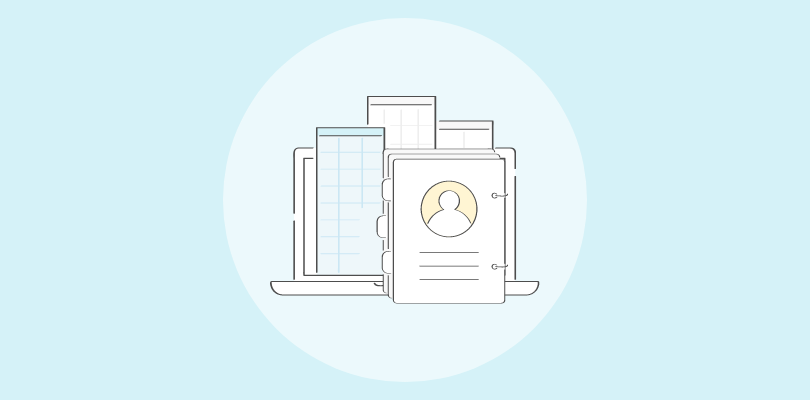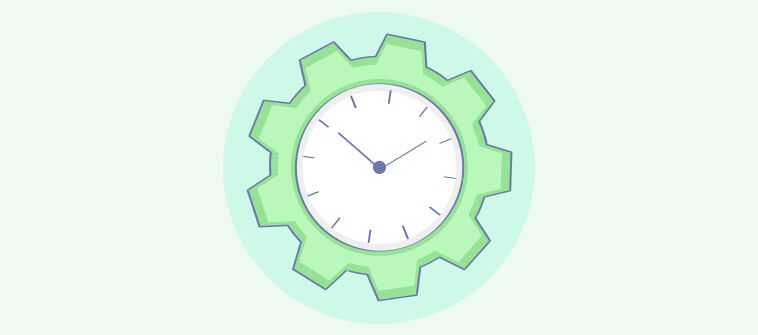
Customer service can be challenging. Imagine dealing with customers from diverse backgrounds, being patient with an angry customer, or handling multiple customer chats simultaneously.
But guess what? It doesn’t have to be, thanks to customer service training manuals, which provide in-depth guidance, strategies, and techniques to help you and your employees excel in customer service roles.
In this article, we’ll cover everything you need to know about customer service training manuals, from why they’re essential to how to create and implement them effectively.
What Is a Customer Service Training Manual?
A customer service training manual is an extensive guide that provides employees with the knowledge, skills, and strategies they need to deliver exceptional customer service.
It serves as a valuable resource to train and onboard new employees and enhance the skills of existing customer service professionals.
These manuals usually cover a wide range of topics related to customer service, including communication skills, problem-solving techniques, conflict resolution, product knowledge, and company policies and procedures.
Here are a few examples of customer service training manual contents:
- Soft Skills: This section details the essential interpersonal skills to engage with customers effectively. It covers active listening, empathy, patience, and friendliness.
- First Impressions: This section focuses on the crucial role of the first impression in customer interactions. It includes guidance on greeting customers, creating a positive atmosphere, and projecting professionalism.
- Non-verbal Communication: This section emphasizes the impact of body language, facial expressions, and tone of voice in customer interactions. It provides techniques for conveying positivity and concern through non-verbal cues.
- Problem Solving: This section provides employees with problem-solving techniques to handle customer complaints and issues effectively. It includes strategies for staying calm, analyzing problems, proposing solutions, and following up with customers.
- Telephone Etiquette: This section covers information on communication skills specific to phone interactions. It covers topics such as answering calls promptly, speaking clearly, and effectively resolving issues over the phone.
- Handling Unhappy Customers: This section includes techniques for managing customer complaints, de-escalating tense situations, and turning negative experiences into positive ones.
Read More: How to Create Sales Documentation with Examples
Why Is It Important for Businesses to Have Customer Service Training Manuals?
Customer service training manuals ensure consistency, develop employee skills, boost engagement, and improve retention.
Let’s look at some of their importance for businesses.
Consistency
A detailed customer service training manual ensures that all employees follow the same guidelines and procedures, leading to a consistent customer experience.
For example, a fast-food chain could have a training manual that outlines the steps for taking orders, preparing food, and maintaining cleanliness.
By following these guidelines, customers can expect a consistent level of service regardless of which location they visit.
Read More: What Is Training Documentation & How to Create One
Skill Development
Customer service training manuals provide employees with the necessary skills to handle customer interactions.
For example, a retail company might include training on active listening. Employees can practice this skill when engaging with customers, making them feel heard and understood.
Employee Engagement and Motivation
Effective training programs can enhance employee engagement and motivation.
For example, a software company could provide a customer service training manual with interactive activities like role-playing exercises or quizzes.
These engaging elements make the training process more interactive and motivate employees to participate and improve their skills actively.
Employee Retention and Loyalty
Investing in employee training and development conveys to employees that the business cares about their growth and success.
For example, a hospitality company could offer customer service training programs that include opportunities for career development, such as leadership training or specialized workshops.
These steps help retain employees by providing them with a clear path to advancement within the organization.
Customer Loyalty and Satisfaction
A well-trained customer service team directly helps customer loyalty and satisfaction. According to Microsoft, 96% of consumers say customer service is an important factor in their choice of loyalty to a brand.
For example, an online retailer may have a training manual focusing on resolving customer complaints.
By providing employees with effective problem-solving techniques, they can address customer issues promptly and turn negative experiences into positive ones, thereby enhancing customer satisfaction and loyalty.
Types and Examples of Customer Service Manual
Different customer service manuals highlight the importance of customer-centricity, effective communication, problem-solving, empathy, time management, and sales techniques.
Customer-Centric Culture Manual
This training manual focuses on instilling a customer-centric mindset throughout the organization.
It covers understanding customer needs, building empathy, effective communication, problem-solving, and exceeding customer expectations.
The manual usually includes real-life scenarios, case studies, and interactive exercises to reinforce key concepts and encourage employees to prioritize customer satisfaction.
Effective Communication Skills Manual

This manual emphasizes the importance of clear and effective communication in customer service.
It covers verbal and non-verbal communication techniques, active listening, asking the right questions, and conveying information in a way that customers easily understand.
The manual may also provide tips for communicating professionally through written channels like email or live chat.
Customer Complaints Resolution Manuals

This manual targets handling customer complaints effectively and turning negative experiences into positive ones.
It details strategies for actively listening to customer concerns, empathizing, finding solutions, and following up to ensure customer satisfaction.
The manual could include role-playing exercises to help employees practice problem-solving and conflict-resolution skills.
Building Rapport and Empathy Manual
This manual emphasizes creating solid relationships and rapport with customers.
It includes techniques for building trust, showing empathy, understanding different customer personalities, and tailoring interactions to meet individual needs.
The manual could provide examples and scenarios to help employees practice rapport-building skills.
Time Management and Prioritization Manual
This manual emphasizes the importance of managing time effectively in a customer service role.
It details strategies for prioritizing tasks, handling multiple customer inquiries simultaneously, and ensuring timely responses.
The manual could include tips for utilizing productivity tools, managing workload, and maintaining focus in a fast-paced environment.
Upselling and Cross-Selling Techniques Manual
This manual trains employees to spot opportunities to upsell or cross-sell products or services.
It actively listens to customer needs, understands product features and benefits, and effectively presents additional offerings.
The manual may include examples of successful upselling scenarios and best practices for increasing sales while providing value to customers.
Customer Service Training Manual Challenges and Solutions
Creating a comprehensive customer training service manual helps users effectively utilize a product or service. However, some challenges may arise during the development process. These are:
Complexity of the Subject Matter
Efficient customer service requires many skills, knowledge, and scenarios. The challenge lies in simplifying complex concepts and breaking them into easily understandable and actionable content.
To address it, use clear language, visual aids, and practical examples to explain concepts. Organize the manual into sections or chapters to make it easier for users to navigate and reference.
Keeping Content Relevant and Up-to-Date
Customer service practices and technologies keep evolving. Updating the training manual to reflect the latest industry trends and best practices can be challenging.
To solve this, regularly review and update the manual to include new information, technologies, and customer service approaches to solve this.
Consider establishing a process for ongoing feedback and input from customer service representatives to keep the manual relevant. Take help from customer service managers and industry experts to review the training content occasionally.
Engaging and Retaining Learner Attention
Training manuals can be dry or dull, leading to disengagement and reduced knowledge retention.
To address this challenge, use interactive elements such as quizzes, case studies, role-playing exercises, and real-life examples to make the training more engaging.
Incorporate multimedia elements like videos or infographics to break up text-heavy sections and maintain learner interest.
Adapting to Different Learning Styles
People have different learning preferences and styles, such as visual, auditory, or kinesthetic. Meeting the needs of diverse learners can be a challenge when creating a single training manual.
To address this challenge, provide diverse learning resources, including written text, diagrams, videos, and audio recordings, to cater to different learning styles.
Consider offering in-person or virtual training sessions in addition to the manual to accommodate hands-on learners.
Application and Practical Implementation
Translating theoretical knowledge from the manual into practical skills on the job can be a tough task. Employees may need help applying what they have learned when faced with real-life customer situations.
To deal with this, incorporate practical exercises, role-playing scenarios, and simulations into the training manual to allow employees to practice and reinforce their skills.
Provide ongoing support, mentoring, and feedback to help employees transfer knowledge from the manual to real-world situations.
How to Build a Customer Service Training Manual
A well-designed and comprehensive customer service training manual is vital for equipping employees with the knowledge and skills required to deliver exceptional customer experiences.
The following are the crucial steps to creating insightful customer service training manuals:
Place the Customer at the Core of the Manual Development Process
Consider your customers’ needs, expectations, and desired outcomes in every manual aspect.
For example, cover sections on empathy and active listening to emphasize the importance of understanding and addressing customer concerns.
Demonstrating how employees can prioritize the customer through examples and scenarios will reinforce this aspect.
Determine the Scope of the Customer Service
Define the scope of your customer service training manual by identifying the specific areas or topics it will cover.
Identify the critical skills, knowledge, and behaviors crucial for your customer service team.
For example, your manual could focus on handling complaints, managing customer expectations, or providing personalized service. By narrowing the scope, you can create a more targeted and effective training resource.
Highlight Your Customer Service Philosophy or Practices
Articulate your company’s customer service philosophy or practices in the manual.
Elaborate on the principles and values guiding your team’s customer interactions.
For example, if your philosophy is based on exceeding customer expectations, add specific examples and stories that illustrate this commitment.
This helps employees understand the organization-wide approach to customer service and align their efforts accordingly.
Provide an Outline of Customer Service Policies
Elaborate on the customer service policies employees must adhere to.
Include information on response times, escalation procedures, and other guidelines specific to your organization.
For example, if your organization offers a 30-day return policy, articulate the steps employees should follow when processing returns.
This helps ensure consistency and standardization in customer service practices.
Capture Feedback From Staff and Customers
Gather feedback from your customer service team and customers to continuously improve the training manual.
This feedback can be obtained through surveys, focus groups, or one-on-one conversations.
For example, you can ask your employees about any areas of the manual that need further clarification or if they have any additional suggestions.
Likewise, collecting customer feedback can provide valuable insights into their experiences and identify areas for improvement or enhancement.
Update Your Training Manual
Keep reviewing and updating your customer service training manual to keep it relevant and effective.
As industry trends, customer expectations, and your company’s practices evolve, the manual must reflect those changes.
For example, if you introduce a new technology tool for customer interactions, update the manual to include instructions for its usage.
By keeping the manual up to date, you ensure that your customer service team has access to the latest information and strategies for providing exceptional service.
Read More: How to Create Customer Service Training Manual With Free Templates
Enhance Customer Experiences With Insightful Customer Service Training Manuals
Customer service training manuals equip employees with the skills and knowledge to deliver exceptional customer service. It imparts knowledge to your teams and enhances the overall user experience.
ProProfs Knowledge Base helps companies create error-free customer service training manuals with customizable templates to training manuals. Its AI-powered text editor lets you create content fast with its pre-built prompts.
Also, the ability to import files and documents, such as Word docs and PDFs, enables users to add relevant content seamlessly. You can boost collaboration. Users can utilize the version control feature to manage multiple versions of help sites based on product or documentation releases.
FREE. All Features. FOREVER!
Try our Forever FREE account with all premium features!








Comment